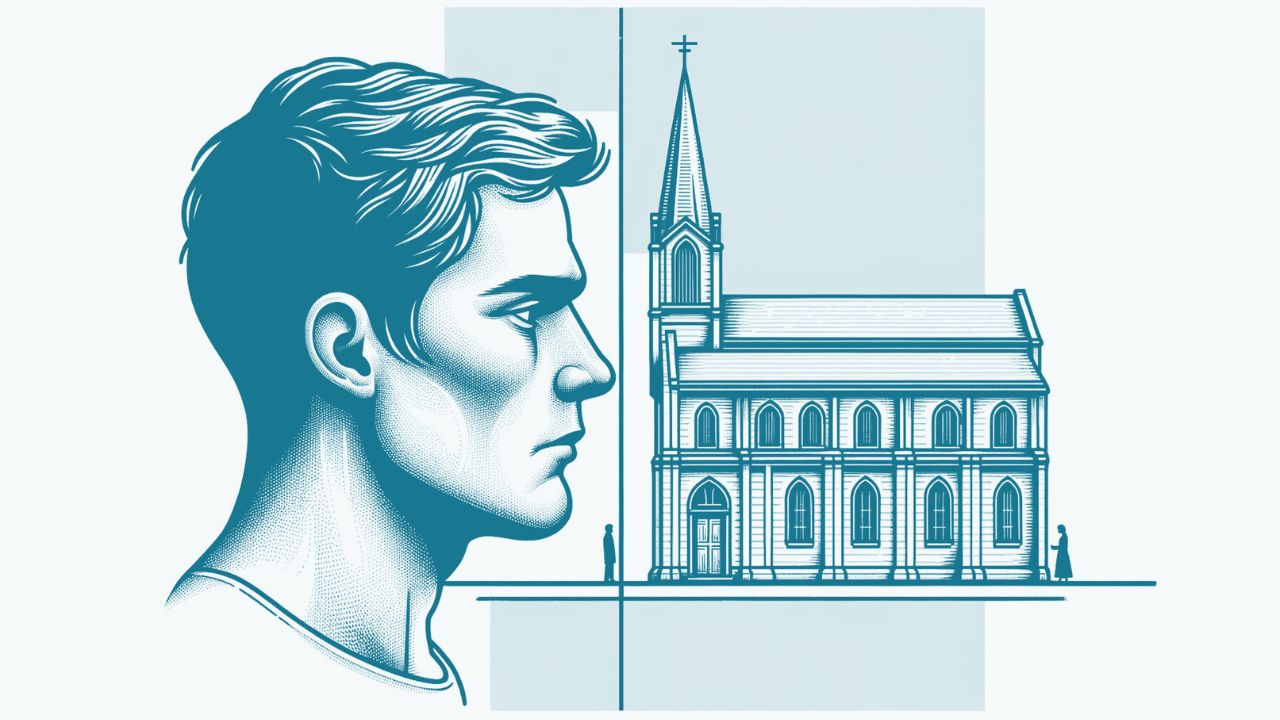
In the gospels, Jesus raises three people from the dead. Lazarus is perhaps the most famous one. There is also the daughter of Jairus, and we are gripped by that story as a young girl who has died comes back to life again. But I think the one we forget most of the time, is the story about the widow of Nain in Luke 6. This week I want to take a look at this story in Luke 7:11-17
The setting for the story is the city of Nain, which was at the base of Mt. Moreh, about 6 miles southeast of Nazareth and 20 miles southwest of Capernaum. According to Luke our story takes place soon after Jesus healed the centurion’s servant in Capernaum.
Jesus arrives at Nain with his disciples and other followers. Luke tells us that there was a great crowd with him. When Jesus comes to the city gate he meets a funeral procession. The funeral is for a widow’s only son. Luke tells us that there is also a crowd going to the cemetery.
According to the customs of the day the body of a dead person would be buried quickly to prevent deterioration. The body would not be kept in the house overnight. Therefore this death was recent. It was probably later in the day. The body would be anointed and wrapped with cloths, placed on a wood plank, (a bier, not in a coffin) and carried outside of the city walls to be buried. Therefore the wrapped body would be visible for all to see. The crowd in the procession would be mourning, which was an act of love by the village inhabitants.
Luke continues to surprise us. The previous story was about a Gentile centurion, who was an unexpected main character. This story features a woman, another unexpected character since women in those days were marginalized. In fact women will be very visible in some upcoming scenes.
The woman has already lost her husband, and now she loses her only son. This would leave her an orphan, without a family, and therefore without protection. The “only” son foreshadows the death of God’s only begotten son. Luke uses the same word that John uses in his prologue: “And the Word became flesh and dwelt among us, and we have seen his glory, glory as of the only Son from the Father, full of grace and truth.” (John 1:14 esv) Also, the orphaned mother is a reminder of what will happen to Jesus’ mother who is now also a widow.
The scene is gripping and captivating; this juxtaposition of the two crowds meeting at the city gate. The crowd with Jesus has been seeing remarkable things, filled with life and anticipating what will happen next. The crowd with the widow is lost in grief and despair. The moods of these two crowds meeting at the city gate could not be more opposite; “The Way of Life meets the way of death.”1 The followers of life stumble upon the followers of death. Can you imagine the scene? Can you imagine the awkwardness between these two crowds? The scene stops us in our tracks in the same way these two crowds must have stopped in their tracks.
Jesus comes upon the funeral procession and sees the distraught woman who is probably leading the procession. Unlike other situations, Jesus initiates the action. His words and actions are dramatic and poignant. There are five movements in the healing.
First, Jesus’ initial reaction is compassion. He is deeply moved. The NIV translates “his heart went out to her” and the Message, “his heart broke.” Perhaps tears filled his eyes. This is the same word that Luke uses to describe how the Good Samaritan feels when he happens along a man lying in the road and also the emotion of the father when he sees his prodigal son coming down the road towards home.
Second, Jesus tells the woman, “do not weep.” Jesus will say the same thing to those gathered at Jairus’ house when his daughter dies. This seems so strange to me. Would the woman be comforted or agitated? Would Jesus’ words be soothing or would she have thought this some kind of sick joke. Maybe a little bit of both. I really don’t know.
Third, he approaches the bier, the plank on which the dead man’s body rests, and he touches it. This is amazing. Whenever the words “come up” is used of Jesus approaching someone, it leads to his acting with authority (Mark. 1:31; Luke 9:42; Matt. 28:18). By touching the bier Jesus renders himself unclean (Num. 19:11, 16), an idea that we have already seen several times in Luke. However Jesus is not put off, because people are more important than ritual cleanliness. For me this action is heart-rending. Can you imagine seeing a funeral at a cemetery, moving through the crowd, and putting your hands on the casket.
Fourth, Jesus addresses the man directly and tells him to arise. This too strikes us as either humorous or tragic. Jesus said the same thing to Jairus’ daughter in chapter 8 (Mark 5:41; Luke 8:54). He also speaks directly to Lazarus when he raises him from the dead (John 11:43). This action by Jesus foreshadows his resurrection from the dead. The man sits up and begins to talk. The word for “sat up” is a “medical term often used outside of the Bible to describe the sitting up of someone who was formerly incapacitated by illness.”2 Suddenly life replaces death.
Finally, Jesus gives the man back to his mother. This is highly significant, for the phrase “gave him to his mother” is verbatim the phrase we find in 1 Kings 17:23, when Elijah raises the widow of Zarephath’s son from the dead. The miracle also reminds us of the story in 2 Kings 4, when Elisha raises the son of a couple who lives in Shunem from the dead. This event took place only a couple miles away from Nain, and the inhabitants of Nain would have been fully aware of it. Every word in this short story is packed with meaning.
This is how it has happened in my life when I have been touched by Jesus. But when you think about it, the stories that move us are the stories of brothers and sisters in Christ who have undergone the same process, who have experienced the healing touch of Jesus, who have found life, but a completely different kind of life through their struggles and pain, who have experienced restoration and redemption, who have seen and tasted that despite the tragedies of life God is good, faithful, and compassionate. If you need that this week I pray that you would receive it by his mercy. God is compassionate towards you. He sees you and cares for you. He is right next to you, suffering with you and he will be with you every day and every hour of your life. The life of Jesus is what our heart longs for, to know his presence no matter the circumstances of our life.



